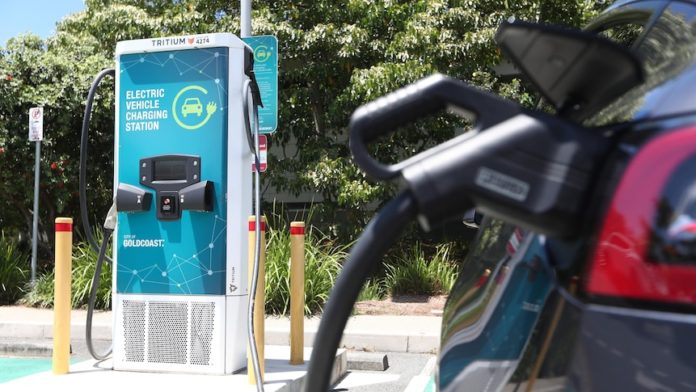Drivers could be fined as much as $3,200 for parking in spaces for electric vehicles as part of little-known penalties introduced in four states and territories.
Key points:
- Drivers in four states and territories face steep fines for parking non-electric cars in electric car charging spaces
- The fines range from $3,200 in the ACT to $369 in Victoria
- EV advocates say the fines are necessary to educate the public and support the transition to electric vehicles across Australia
The fines, some of them added to road rules late last year, range from $3,200 in the Australian Capital Territory to $369 in Victoria.
But experts say the heavy penalties are important to encourage electric vehicle adoption and prevent drivers doing the equivalent of parking “in front of a fuel bowser”.
The fines apply to drivers who leave petrol or diesel vehicles in spaces designated for electric cars, in an act known as “ICEing” for its use of internal combustion engine cars.
But the penalties also apply to electric car drivers who occupy the parking spots while not actually recharging their vehicles.
NSW Metropolitan Roads Minister Natalie Ward said the government added the offence to “support the transition to electric vehicles on our roads”.
“To make sure we keep the community moving forward, we want electric vehicle drivers to have access to charging stations when they are on offer,” she said.
The ACT, NSW and Queensland introduced the steepest fines for blocking access to charging stations, with a maximum fine of 20 penalty units.
But due to different unit prices, drivers in the ACT could be fined up to $3,200, in NSW it could cost $2,200 and in Queensland it could cost drivers $2,875.
The Victorian fine for misusing an electric vehicle charging space is two penalty units, or $369.
Australian Electric Vehicle Association national president Chris Jones said while the penalties for blocking infrastructure were high, they were necessary to educate members of the public who may not have considered the repercussions.
“No one would like it if I parked my vehicle in front of a fuel bowser and walked inside and ordered lunch,” he said.
“There needs to be an acknowledgement that there are places you can park and places you can’t, and right in front of an EV charger is one where you can’t.”
Electric Vehicle Council policy head Jake Whitehead said the fines sent “a very clear and strong signal”.
But he said greater education may be needed for petrol car drivers who encountered chargers added to existing car parks, as well as new electric vehicle drivers who did not recognise the need to vacate charging locations for other drivers as soon as practical.
“Every charger available is critical and valuable to the fleet of 80,000-odd EVs in the country, and we need to make sure they’re not blocked, either intentionally or accidentally,” he said.
“There are genuine mistakes made by some people, but we need to have a broad recognition across society that these chargers need to be available to EVs so we can have more on our roads.”
There are more than 83,000 electric vehicles in Australia, according to the EV Council, with the battery-powered vehicles making up 6.8 per cent of all new car sales in February.
AAP

